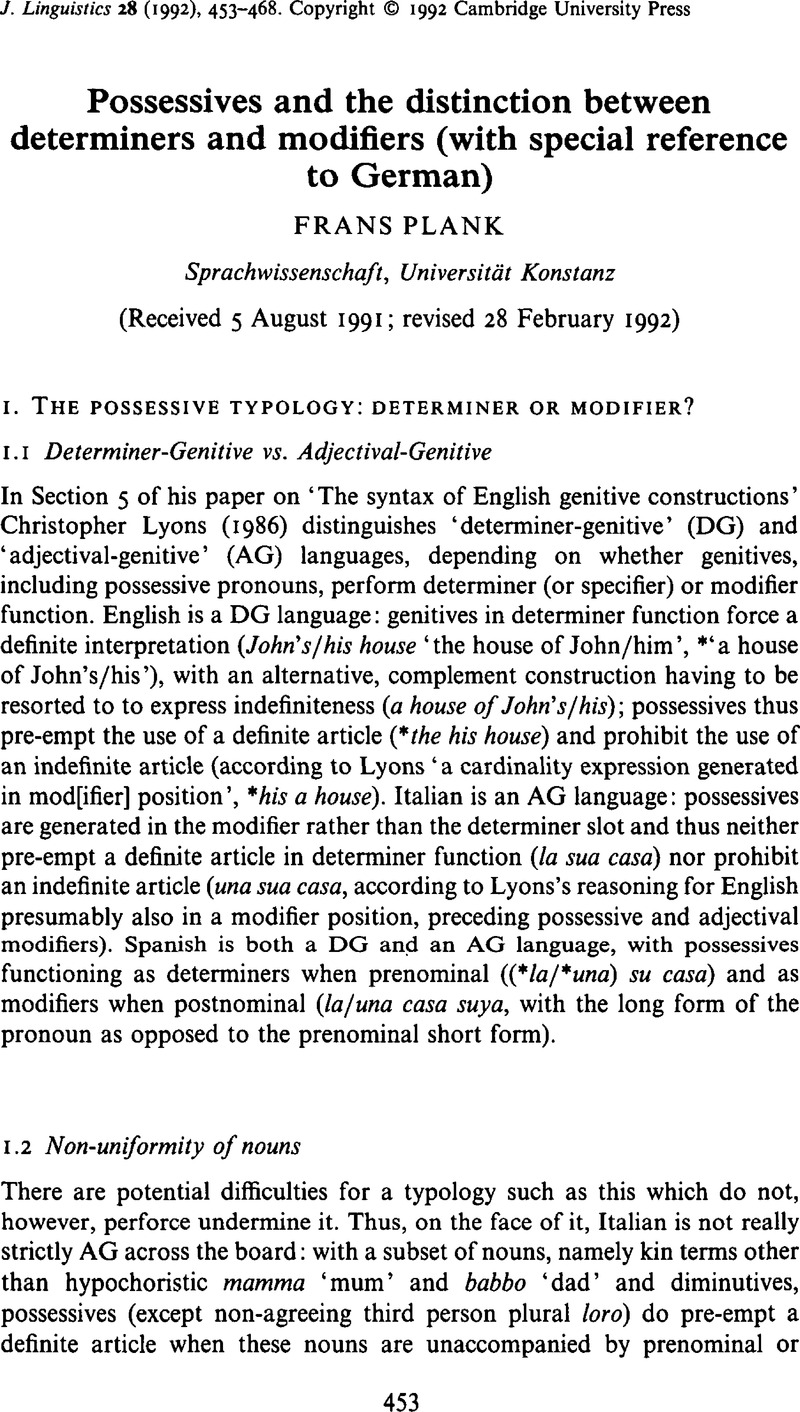Crossref Citations
This article has been cited by the following publications. This list is generated based on data provided by Crossref.
Börjars, Kersti
1994.
Swedish Double Determination in a European Typological Perspective.
Nordic Journal of Linguistics,
Vol. 17,
Issue. 2,
p.
219.
ESCRIBANO, JOSÉ LUIS GONZÁLEZ
1995.
On the incompatibility of genitives and restrictive relative clauses: an explanation within the theory of principles and parameters.
ling,
Vol. 33,
Issue. 4,
p.
711.
Van de Velde, Freek
2009.
Do we need the category of postdeterminer in the NP?1.
Transactions of the Philological Society,
Vol. 107,
Issue. 3,
p.
293.
Vezzosi, Letizia
2010.
Cynthia Allen, Genitives in Early English. Oxford: Oxford University Press, 2008. Pp. 354. ISBN 978-0-19-921668-0..
English Language and Linguistics,
Vol. 14,
Issue. 3,
p.
511.
Van de Velde, Freek
2010.
The emergence of the determiner in the Dutch NP.
Linguistics,
Vol. 48,
Issue. 2,
Horn, Christian
and
Kimm, Nicolas
2014.
Frames and Concept Types.
Vol. 94,
Issue. ,
p.
343.
Bartnik, Artur
2014.
Advances in the Syntax of DPs.
Vol. 217,
Issue. ,
p.
247.
Lowe, John J.
2016.
English possessive ’s: clitic and affix.
Natural Language & Linguistic Theory,
Vol. 34,
Issue. 1,
p.
157.
ROSENBACH, ANETTE
2019.
On the (non-)equivalence of constructions with determiner genitives and noun modifiers in English.
English Language and Linguistics,
Vol. 23,
Issue. 4,
p.
759.
Mwinlaaru, Isaac N.
2021.
deixis in the Dagaare Nominal Group: Syntagmatic and Paradigmatic Perspectives.
<i>WORD</i>,
Vol. 67,
Issue. 3,
p.
281.
Dékány, Éva
2021.
The Hungarian Nominal Functional Sequence.
Vol. 100,
Issue. ,
p.
93.
Lander, Yury
2022.
Description and determination in Tanti Dargwa NPs.
Linguistics,
Vol. 60,
Issue. 3,
p.
809.
Louagie, Dana
and
Reinöhl, Uta
2022.
Typologizing nominal expressions: the noun phrase and beyond.
Linguistics,
Vol. 60,
Issue. 3,
p.
659.





